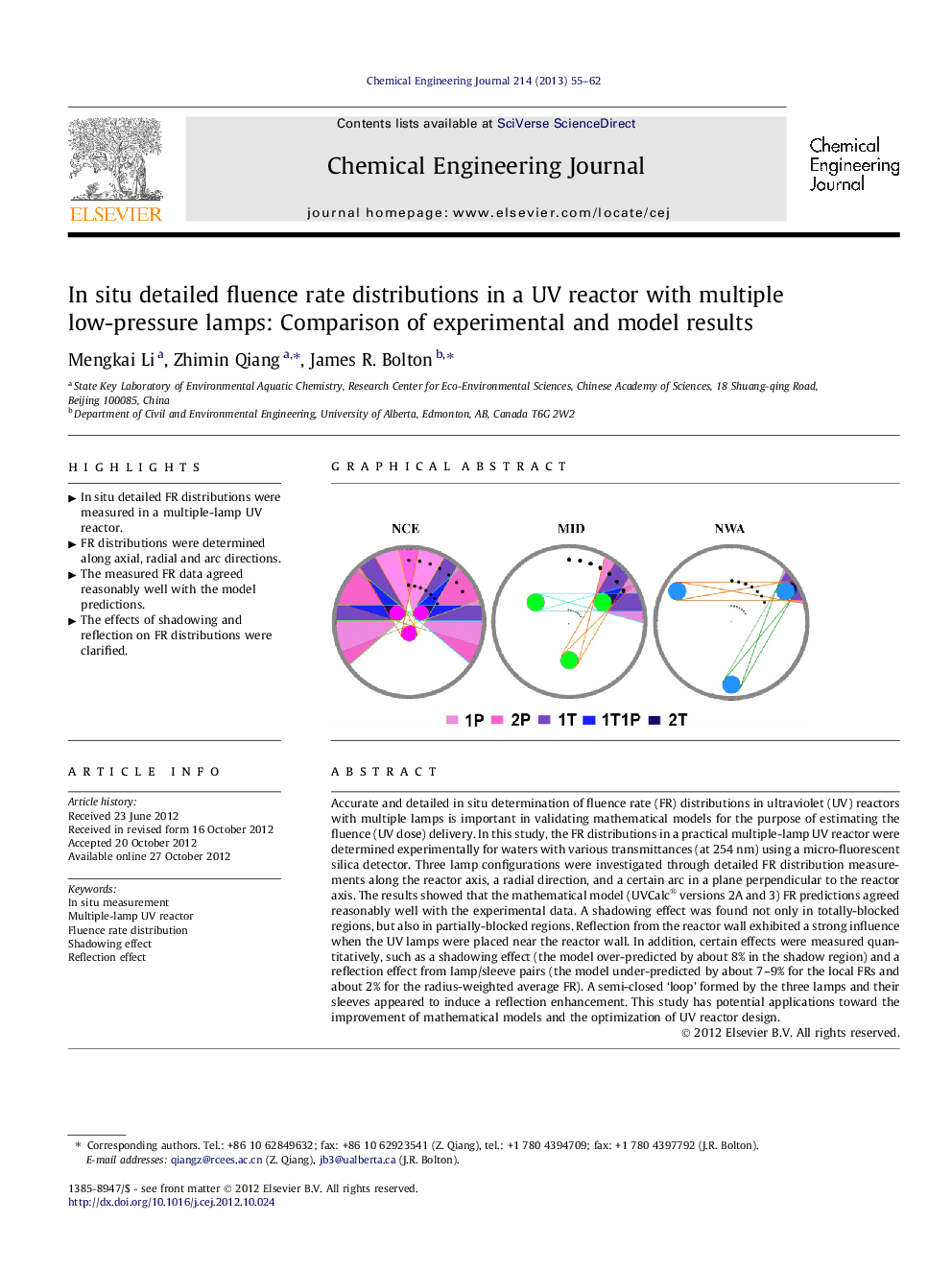| Article ID | Journal | Published Year | Pages | File Type |
|---|---|---|---|---|
| 149038 | Chemical Engineering Journal | 2013 | 8 Pages |
Accurate and detailed in situ determination of fluence rate (FR) distributions in ultraviolet (UV) reactors with multiple lamps is important in validating mathematical models for the purpose of estimating the fluence (UV dose) delivery. In this study, the FR distributions in a practical multiple-lamp UV reactor were determined experimentally for waters with various transmittances (at 254 nm) using a micro-fluorescent silica detector. Three lamp configurations were investigated through detailed FR distribution measurements along the reactor axis, a radial direction, and a certain arc in a plane perpendicular to the reactor axis. The results showed that the mathematical model (UVCalc® versions 2A and 3) FR predictions agreed reasonably well with the experimental data. A shadowing effect was found not only in totally-blocked regions, but also in partially-blocked regions. Reflection from the reactor wall exhibited a strong influence when the UV lamps were placed near the reactor wall. In addition, certain effects were measured quantitatively, such as a shadowing effect (the model over-predicted by about 8% in the shadow region) and a reflection effect from lamp/sleeve pairs (the model under-predicted by about 7–9% for the local FRs and about 2% for the radius-weighted average FR). A semi-closed ‘loop’ formed by the three lamps and their sleeves appeared to induce a reflection enhancement. This study has potential applications toward the improvement of mathematical models and the optimization of UV reactor design.
Graphical abstractFigure optionsDownload full-size imageDownload as PowerPoint slideHighlights► In situ detailed FR distributions were measured in a multiple-lamp UV reactor. ► FR distributions were determined along axial, radial and arc directions. ► The measured FR data agreed reasonably well with the model predictions. ► The effects of shadowing and reflection on FR distributions were clarified.
